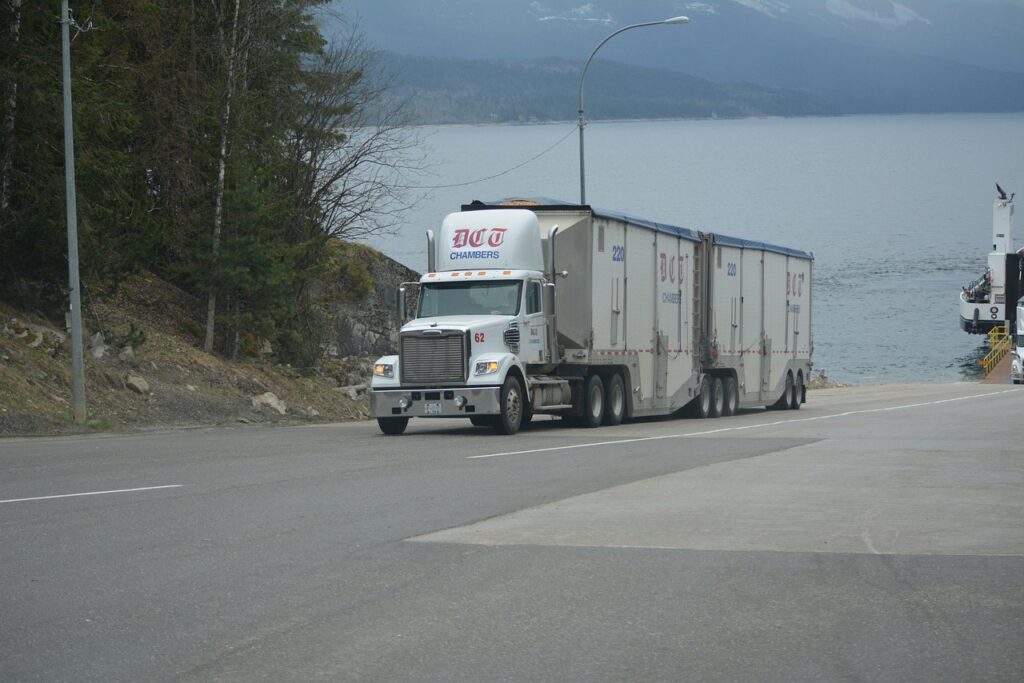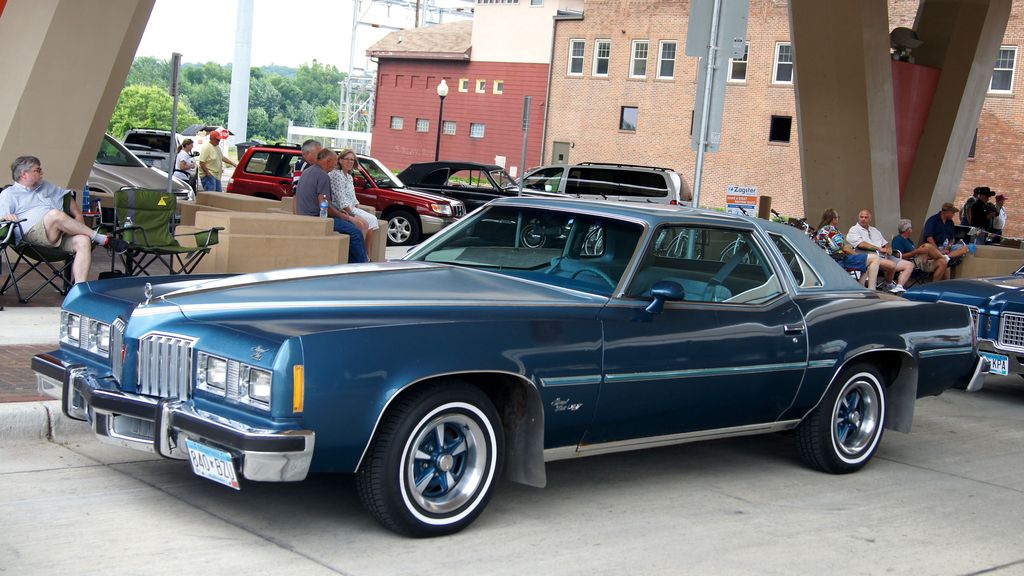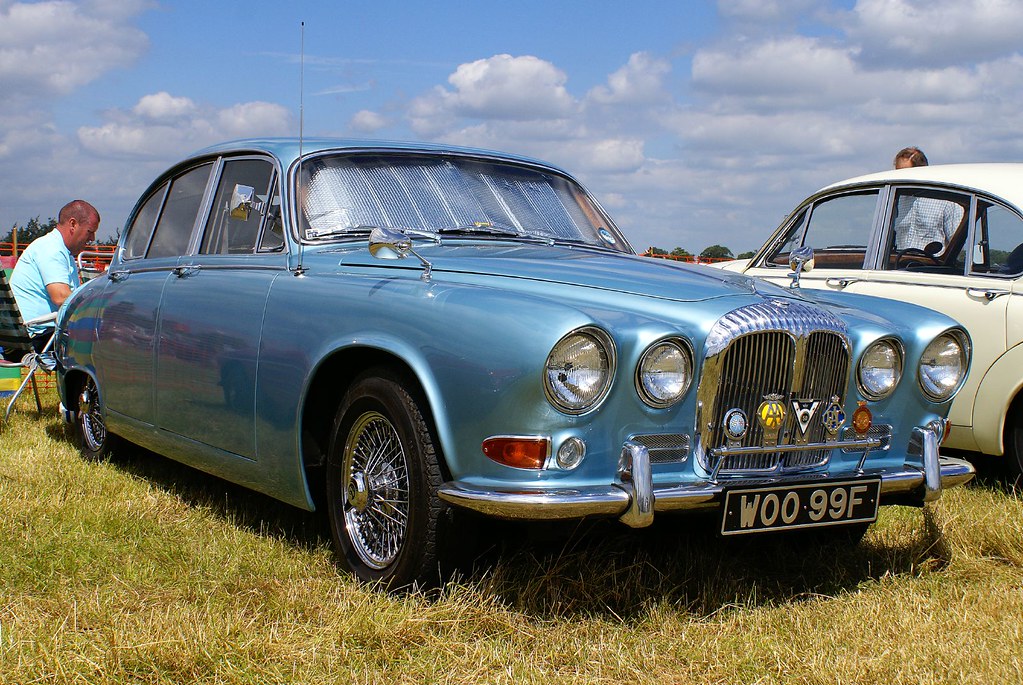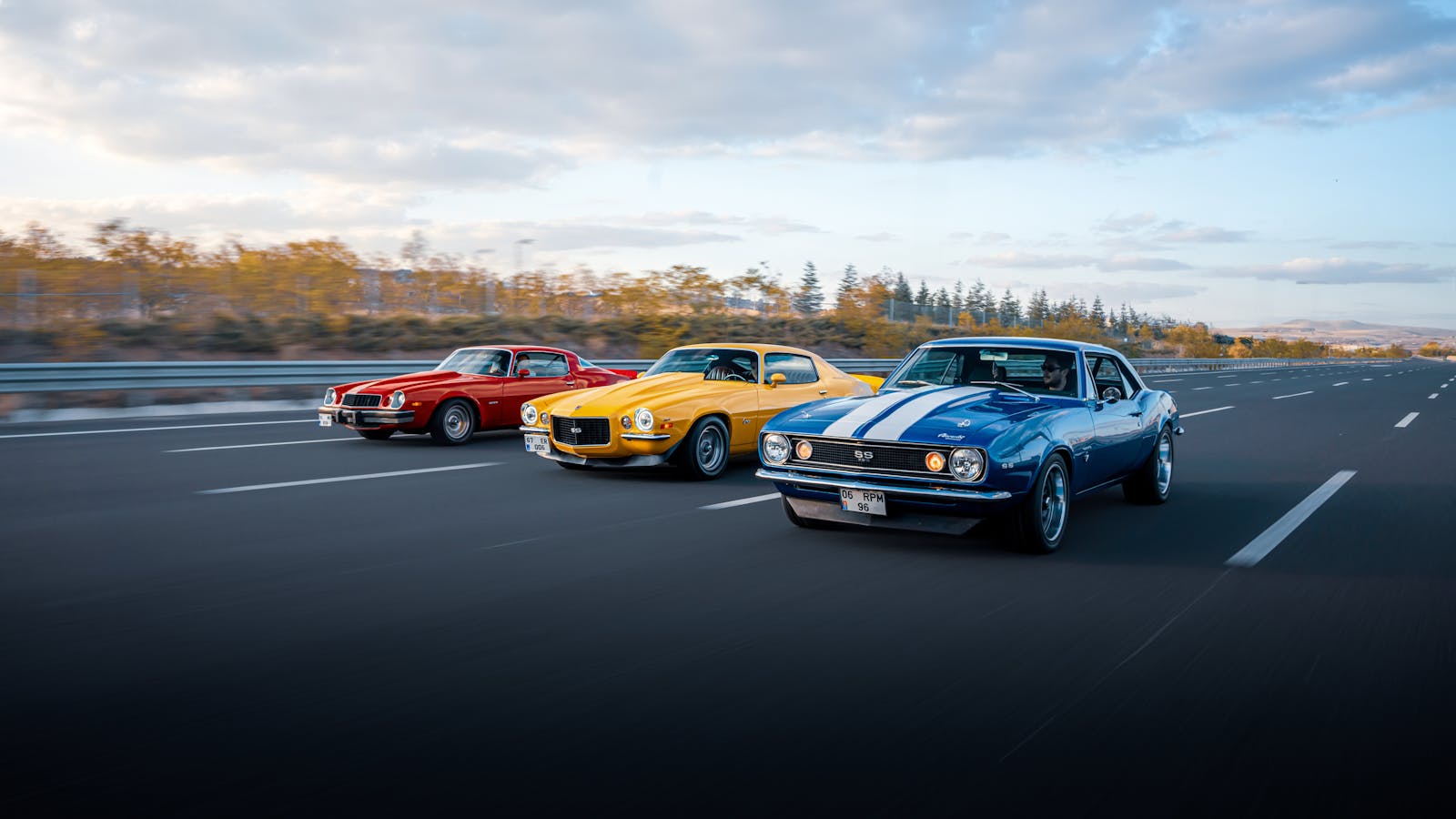
The golden era of American muscle cars, a period steeped in automotive rivalry and an escalating horsepower war, delivered some of the most exhilarating and, frankly, dangerously powerful production vehicles ever to grace public roads. These mechanical beasts were born from a perfect storm, pushing the boundaries of what was prudent for street use, often with little regard for the practicalities or safety requirements of daily driving.
In an age starkly predating the sophisticated electronic stability control, traction management systems, or even adequate tire technology we take for granted today, these vehicles unleashed unprecedented power into the hands of everyday drivers. The consequences, at times, were nothing short of spectacular and tragically severe. Their raw, untamed nature, while revered today, represented a significant challenge, embodying an uncompromising American appetite for speed and power that often overshadowed considerations of safety or practicality.
Many of these cars boasted power-to-weight ratios that could rival the most exotic sports cars of their contemporary era, yet they came with none of the advanced handling capabilities necessary to safely harness such prodigious performance. This collection delves into seven of these outrageously overpowered muscle cars—machines that were, for better or worse, deemed road-legal despite their barely contained fury, becoming four-wheeled statements of mechanical excess that redefined what belonged on public streets.
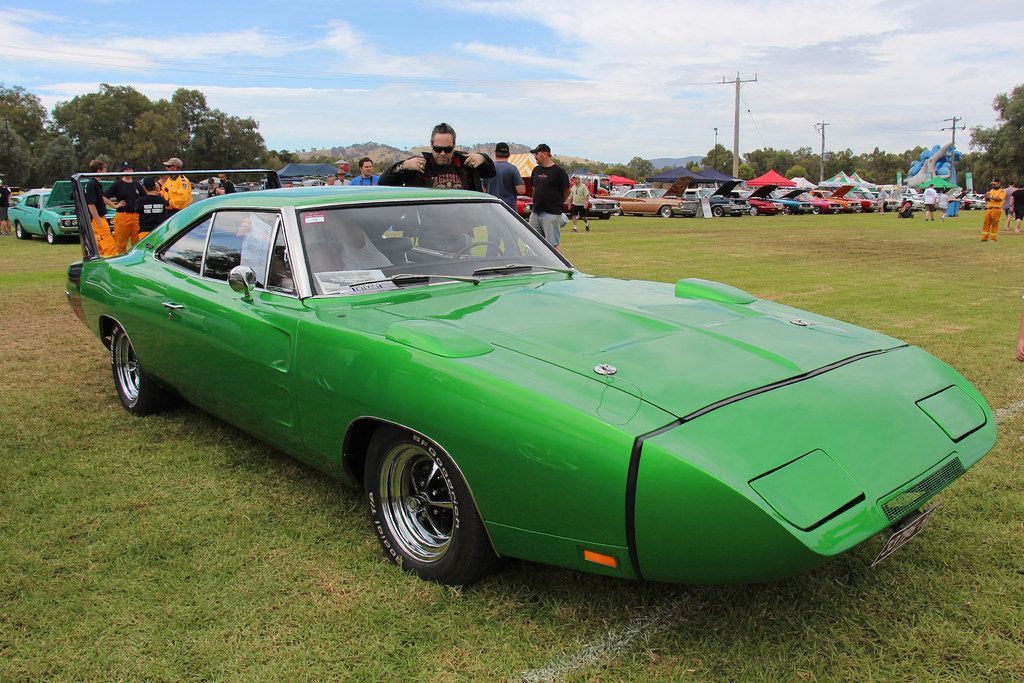
1. **1969 Dodge Charger Daytona/Plymouth Superbird**The 1969 Dodge Charger Daytona and its 1970 Plymouth Superbird sibling stand out as perhaps the most visually outrageous and undeniably overpowered muscle cars ever granted approval for public road use. These “aero warriors” were specifically engineered to dominate NASCAR circuits, featuring aerodynamic modifications that appeared more suited to aircraft than automobiles. Their striking designs included a pointed, 18-inch nose cone, a towering 23-inch rear wing, and flush-mounted rear windows, transforming the standard Charger and Road Runner profiles into something truly otherworldly.
While their radical appearance drew immediate attention, it was the powertrains that rendered these cars genuinely dangerous on the street. The most potent option available was the legendary 426 Hemi V8, officially rated at 425 horsepower. However, it was widely acknowledged that this engine produced well over 500 horsepower in reality, a classic Mopar strategy of deliberately underrating figures to keep a lid on escalating insurance premiums. When equipped with the Hemi and a four-speed manual transmission, these winged marvels could rocket to 60 mph in under 5.5 seconds—a blistering performance for the era—and achieve top speeds approaching 200 mph.
What truly made these cars ill-suited for street use extended beyond their raw power; it was their specialized construction. The aerodynamic modifications, while effective on high-speed NASCAR ovals, proved problematic for city streets or winding back roads. The extended nose cone made parking nearly impossible, severely compromised forward visibility, and, if not properly maintained, could create alarming front-end lift at high speeds. Furthermore, the standard drum brakes were woefully inadequate for the car’s performance potential, and the bias-ply tires of the era struggled desperately to maintain traction under the engine’s monumental torque output. Contemporary road tests frequently noted that these cars felt skittish and unpredictable at speed, demanding experienced hands to manage safely, with an alarming tendency for the rear end to break loose without warning, sending the car into spins that even skilled drivers found challenging to control.
Car Model Information: 2022 Hyundai SANTA FE Limited
Name: Dodge Charger Daytona
Caption: 1969 Dodge Charger Daytona
Manufacturer: Dodge
Production: 1969–1970,2006–2009,2013,2017–2023
Class: Muscle car
Layout: FR layout
Categories: 1960s cars, 1970s cars, 2000s cars, All articles needing additional references, All articles with unsourced statements
Summary: Dodge produced three separate models with the name Dodge Charger Daytona, all of which were modified Dodge Chargers. The name was taken from Daytona Beach, Florida, which was an early center for auto racing and still hosts the Daytona 500, NASCAR’s premier event. The original Dodge Charger Daytona was designed to beat the competition in NASCAR racing. It was the first NASCAR vehicle to reach 200 miles per hour, which was a major milestone at the time.
The first use of the ‘Daytona’ name for a car was on a version of the Studebaker Lark. The Daytona was the performance model of the compact Lark, and it was produced during the 1960s.
Get more information about: Dodge Charger Daytona
Buying a high-performing used car >>>
Brand: Dodge Model: Charger Daytona
Price: $28,719 Mileage: 32,552 mi.
Read more about: The Enduring Magnetism of 1960s American Iron: A Deep Dive into the Decade’s Automotive Icons
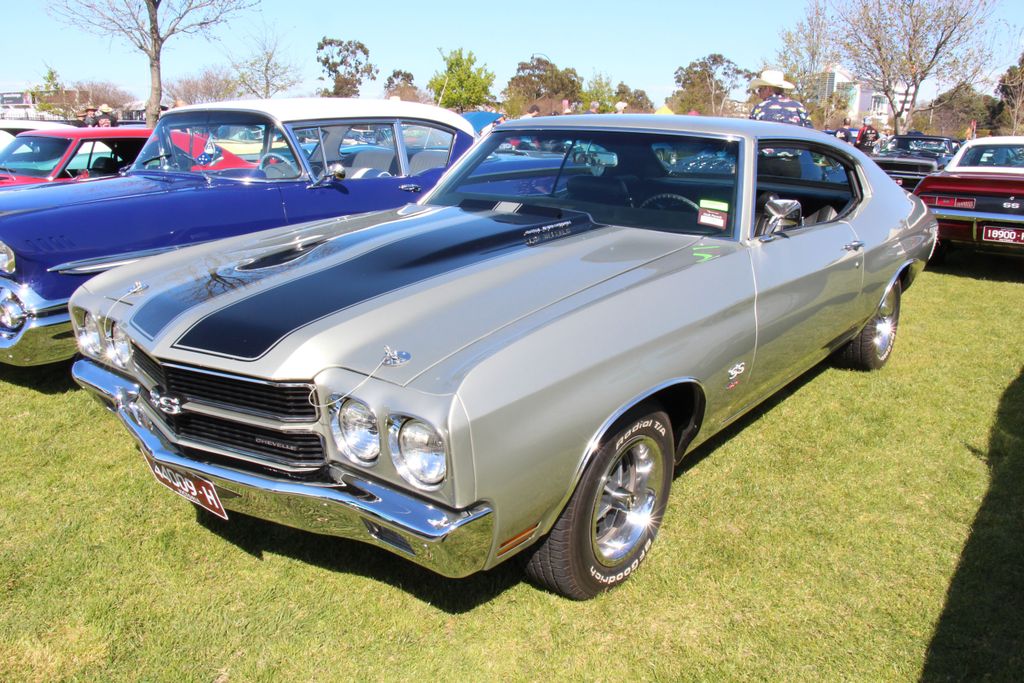
2. **1970 Chevrolet Chevelle SS 454 LS6**The 1970 Chevelle SS 454 with the LS6 engine option represents a pinnacle of GM’s contribution to the muscle car horsepower wars, creating what many enthusiasts still consider the ultimate street fighter of its time. During a fierce period of manufacturer competition for horsepower supremacy, Chevrolet unleashed an arguably excessive weapon: a 454 cubic-inch big-block V8 fitted with a high-lift, solid-lifter camshaft, an 11.25:1 compression ratio, and crowned with a massive 780 CFM Holley four-barrel carburetor.
Officially rated at a staggering 450 horsepower and 500 lb-ft of torque, the LS6 Chevelle’s actual output was widely believed to significantly exceed 500 horsepower. This figure, like many of its contemporaries, was deliberately underreported to help manage insurance rates for buyers. This astonishing power was paired with a relatively lightweight package, typically around 3,800 pounds, and delivered through either a robust Muncie four-speed manual or a three-speed Turbo-Hydramatic transmission to a durable 12-bolt rear end with a limited-slip differential. The performance was truly seismic for the era, achieving 0-60 mph in approximately 5.4 seconds and quarter-mile times in the low 13-second range at over 108 mph—benchmark performances that would remain impressive for decades, especially considering they were accomplished with primitive bias-ply tires offering minimal traction.
What made the LS6 Chevelle particularly dangerous on public roads was a perfect storm of excessive power, rudimentary chassis technology, and remarkable accessibility. Unlike some exotic high-performance vehicles that demanded special ordering or came with prohibitive price tags, the Chevelle SS was relatively affordable and readily available at any Chevrolet dealership. This put extraordinary performance into the hands of virtually anyone with modest means. The car’s suspension system, essentially the same setup used on much less powerful Chevelles, was entirely inadequate for managing the LS6’s brutal power. Its front-heavy weight distribution led to pronounced understeer during initial cornering, which could abruptly transition to catastrophic oversteer when the throttle was applied aggressively. The standard drum brakes, even with optional front discs, were drastically overmatched by the engine’s capabilities, frequently leading to significant brake fade after only a few hard stops. Period road tests often advised that the LS6 Chevelle required “respect and considerable driving skill” to operate safely, a clear indication that this car could be lethal in the wrong hands.
Car Model Information: 2022 Hyundai SANTA FE Limited
Name: Chevrolet Chevelle
Caption: 1970 Chevrolet Chevelle SS 396 Sport Coupe
Manufacturer: Chevrolet
Production: 1963–1977
ModelYears: 1964–1977
Class: Mid-size
Platform: GM A platform (RWD)
Layout: FR layout
Successor: Chevrolet Malibu
Categories: 1970s cars, All articles needing additional references, All articles that may contain original research, All articles with specifically marked weasel-worded phrases, All articles with unsourced statements
Summary: The Chevrolet Chevelle is a mid-sized automobile that was produced by the Chevrolet division of General Motors (GM) in three generations for the 1964 to 1977 model years. Part of the GM A-body platform, the Chevelle was one of Chevrolet’s most successful nameplates. Body styles included coupes, sedans, convertibles, and station wagons. The “Super Sport” versions were produced through the 1973 model year and Lagunas from 1973 through to 1976.
After a four-year absence, the El Camino was reintroduced as part of the new Chevelle lineup in 1964.
From 1964 to 1969, GM of Canada sold a modified version of the Chevelle that included a Pontiac-style grille, and a LeMans instrument panel, marketed as the Beaumont.
The Malibu was the top-of-the-line model to 1972, and completely replaced the Chevelle nameplate starting with the redesigned, and downsized 1978 model year.
Get more information about: Chevrolet Chevelle
Buying a high-performing used car >>>
Brand: Chevrolet Model: Chevelle SS 454
Price: $28,719 Mileage: 32,552 mi.
Read more about: 12 Rides of a Lifetime: Vin Diesel’s Real-Life Car Collection That Even Dom Toretto Would Envy
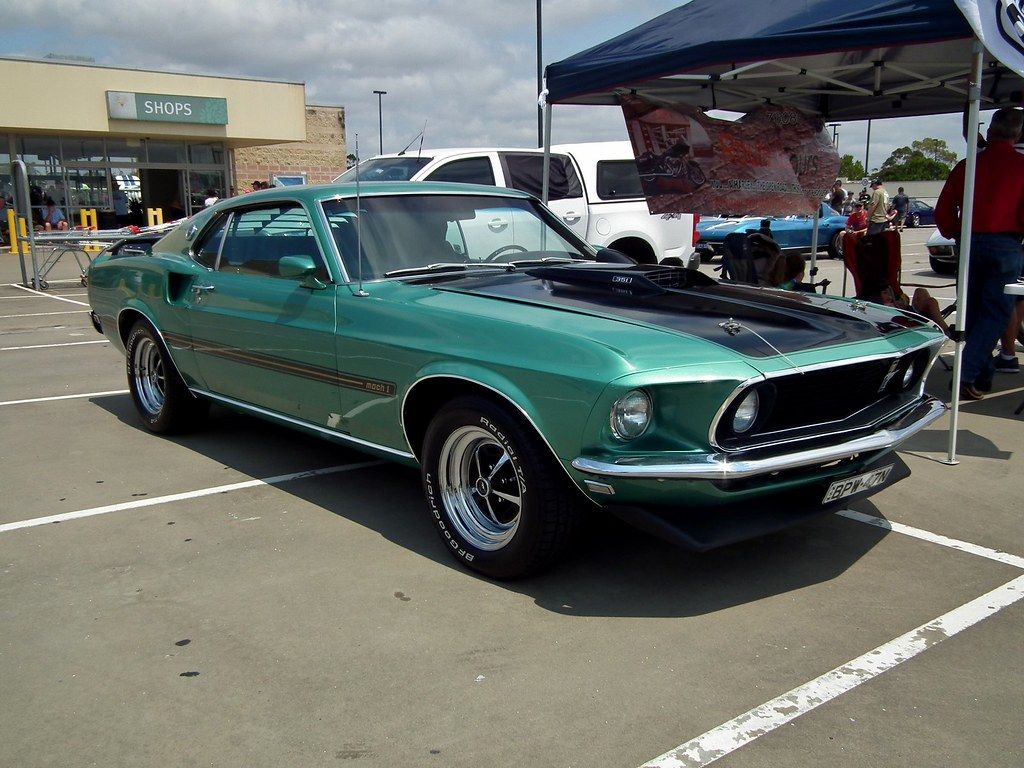
3. **1969 Ford Mustang Boss 429**The 1969 Ford Mustang Boss 429 stands as one of the most dangerously overpowered production cars of its era, conceived not for practicality or even outright street racing dominance, but purely to homologate Ford’s massive new hemispherical combustion chamber engine for NASCAR competition. The “Boss 9,” as it was affectionately known among enthusiasts, was an extreme engineering exercise, essentially an answer to the question: “What happens when you stuff the largest, most powerful engine possible into a car never truly designed to accommodate it?”
At its core, the Boss 429 engine was a true monster—a 429 cubic-inch V8 featuring aluminum heads with enormous hemispherical combustion chambers, forged pistons, four-bolt main bearings, and a formidable 735 CFM Holley carburetor. While officially rated at a seemingly modest 375 horsepower, a figure deliberately underreported to keep insurance rates manageable, its actual output was widely acknowledged to exceed 500 horsepower and 490 lb-ft of torque in stock form. Installing this colossal engine into the Mustang’s relatively compact engine bay necessitated sending partially built vehicles to contractor Kar Kraft, who extensively modified the front suspension, widened the shock towers, relocated the battery to the trunk, and made numerous other alterations simply to make the engine fit.
The result of these extensive modifications was a front-end weight bias so severe that the car’s handling became dangerously unpredictable. It exhibited a strong tendency toward dramatic understeer that could abruptly transition to sudden, perilous oversteer when power was applied. What made the Boss 429 particularly ill-suited for street use was not just its raw power, but its specific power delivery characteristics. The engine was optimized for sustained high-RPM operation on NASCAR ovals, making it a temperamental street performer that ran poorly at low RPMs but delivered an explosive surge of power at higher engine speeds. This “all-or-nothing” power band made the car extraordinarily difficult to drive smoothly or safely in traffic. Contemporary road tests famously noted that the Boss 429 was often slower in straight-line acceleration than less powerful Mustangs due to its peaky power delivery and massive weight over the front wheels. With only 859 units produced over two years, the Boss 429 remains one of the rarest and most extreme examples of Detroit’s willingness to compromise everyday drivability in pursuit of racing dominance.
Car Model Information: 2021 Dodge Challenger R/T Scat Pack
Caption: 1969 Boss 429
Layout: Longitudinal engine
Manufacturer: Ford Motor Company
Production: 1969–1970
Name: Mustang Boss 429
Class: Muscle car
BodyStyle: coupé
Assembly: Dearborn, Michigan
Height: 50.4 in
Abbr: on
Length: 187.4 in
Width: 71.7 in
Engine: 429 cuin
Transmission: manual transmission
Weight: 3870 lb
Categories: All Wikipedia articles needing clarification, All articles needing additional references, All articles with unsourced statements, Articles needing additional references from August 2008, Articles with short description
Summary: The Boss 429 Mustang is a high-performance Ford Mustang variant that was offered by Ford in 1969 and 1970. It featured a race-designed 429 cu in (7.0 L) semi-hemispherical head version of the big block 429 V8, offered in the car both to homologate the engine for NASCAR racing and to offer a bigger, more-powerful version of the popular small block 5 L Boss 302 Mustang.
The price of all the performance and modifications was steep: at nearly $5,000 a Boss 429 was roughly twice the price of the base model inline-6 Mustang. A total of 1,359 Boss 429s were produced.
Get more information about: Boss 429 Mustang
Buying a high-performing used car >>>
Brand: Ford Model: Mustang Boss 429
Price: $37,986 Mileage: 20,124 mi.
Read more about: Unearthing Hidden Horsepower: 10 Rare Muscle Cars Collectors Are Finally Noticing
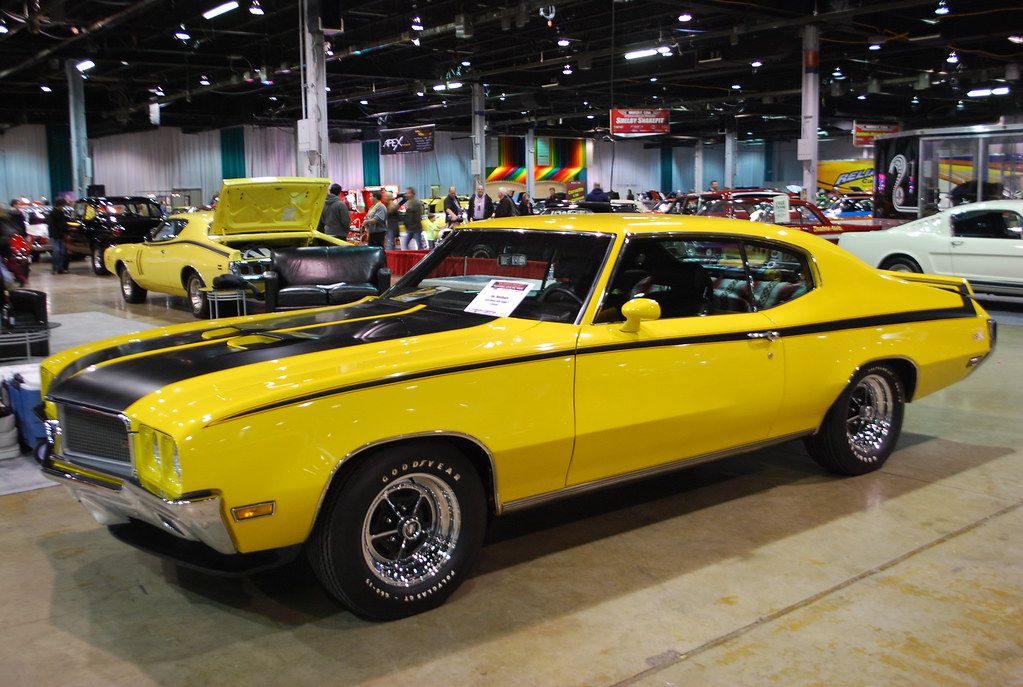
4. **1970 Buick GSX Stage 1**The 1970 Buick GSX Stage 1 fundamentally shattered the prevailing notion that Buick exclusively built “gentleman’s cars.” Instead, it delivered one of the most savagely powerful muscle cars ever to wear a production badge. What made the GSX particularly excessive was its unique ability to cloak its ferocious performance potential beneath Buick’s traditionally more upscale and sophisticated brand image, effectively presenting a wolf in slightly more genteel wolf’s clothing.
At the heart of this beast lay the Stage 1 version of Buick’s massive 455 cubic-inch V8. Officially rated at a seemingly conservative 360 horsepower, this engine produced an earth-moving 510 lb-ft of torque—the highest torque rating of any American production car until the advent of modern supercars decades later. Like many muscle cars of the era, these figures were deliberately underreported, with actual output estimated closer to 400 horsepower. This combination was particularly dangerous due to its immense torque curve; the Stage 1 delivered over 500 lb-ft at a mere 2,800 RPM, generating neck-snapping acceleration from virtually any speed.
Contemporary road tests recorded impressive 0-60 times of approximately 5.5 seconds and quarter-mile times in the high 13-second range—remarkable figures for a car weighing over 3,800 pounds. The GSX package did add more than just power, incorporating a heavy-duty suspension, power front disc brakes, and performance-oriented gear ratios. However, these upgrades proved insufficient to properly manage the engine’s prodigious torque. The suspension, while firmer than standard Buicks, was still tuned more for comfort than absolute control, creating a car that could easily break its rear wheels loose with just a moderate throttle application, even at highway speeds. The additional weight from luxury features, combined with relatively soft suspension components and inadequate period tires, created a dangerous cocktail of massive power in a chassis that could wallow and pitch dramatically during aggressive maneuvers. Period road tests frequently noted that the GSX demanded a delicate touch with the throttle to prevent the rear end from unpredictably stepping out during cornering. With only 678 total GSX models produced in 1970, this Buick remains one of the rarest and most excessive muscle cars ever unleashed on public roads.
Read more about: Unleashing the Beasts: The 10 Most Powerful Classic Muscle Cars We Absolutely Crave for Our Garages
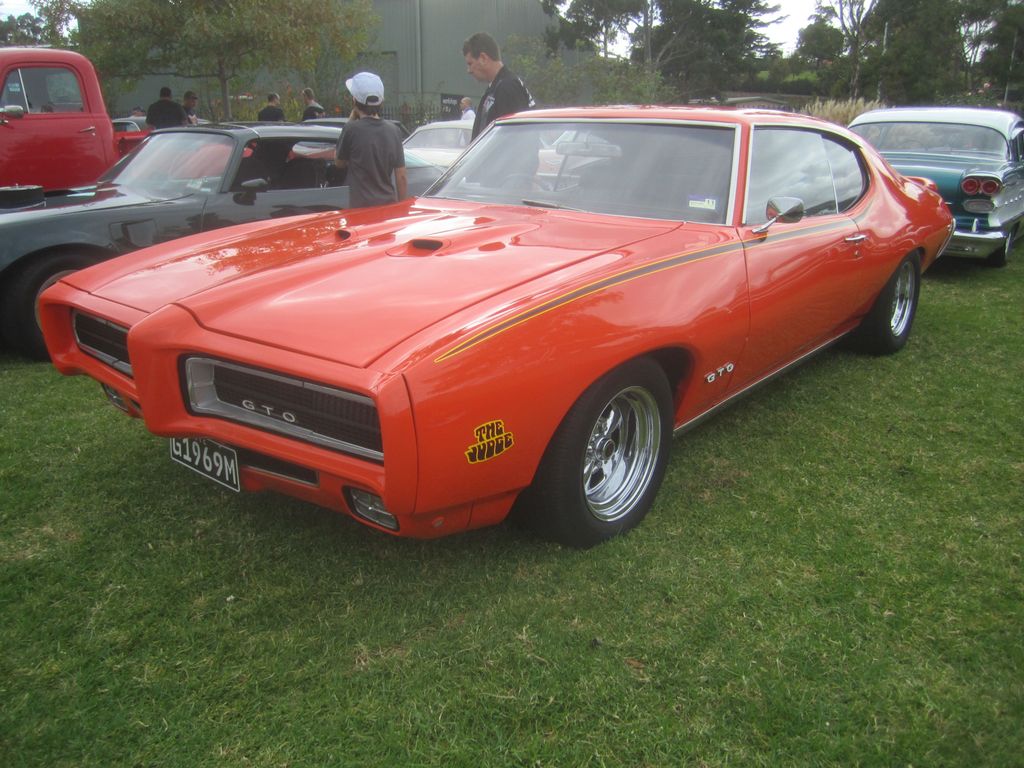
5. **1969 Pontiac GTO Judge Ram Air IV**The 1969 Pontiac GTO Judge, especially when equipped with the Ram Air IV engine option, represented one of the most excessive and track-focused muscle cars ever thinly disguised as a daily driver. While the standard GTO had already firmly established itself as the original muscle car, the Judge Ram Air IV variant aggressively pushed the envelope into territory that rendered it questionably suited for public road use, particularly in the hands of an inexperienced driver.
The Ram Air IV 400 cubic-inch V8 was, by all accounts, a thoroughbred race engine that had been barely detuned for street use. It featured distinctive round-port high-flow cylinder heads, a high-lift camshaft with 308/320 degrees of duration, 1.65:1 ratio rocker arms, and a robust four-barrel Quadrajet carburetor fed by an elaborate cold-air induction system through prominent twin hood scoops. Officially rated at 370 horsepower, the actual output was widely acknowledged to exceed 400 horsepower and 445 lb-ft of torque, showcasing its formidable capabilities.
What made this powertrain particularly ill-suited for routine street driving was its high-strung nature and uncompromising power delivery. The aggressive camshaft profile resulted in a notably rough idle and poor low-end torque, meaning the engine struggled and performed poorly in normal, sedate driving conditions. However, once the tachometer needle swung past 3,500 RPM, the Ram Air IV truly came alive with an explosive surge of power that could easily overwhelm the car’s handling capabilities and the primitive bias-ply tires of the era. Contemporary road tests reported 0-60 mph times of approximately 5.7 seconds and quarter-mile runs in the low 14-second range—impressive figures that arguably undersold the car’s true potential, as most testers openly struggled to launch the vehicle effectively without excessive wheelspin. Motor Trend famously noted that the Ram Air IV GTO was “not for the timid or inexperienced,” a diplomatic acknowledgment of its inherently hairy and demanding handling characteristics.
Car Model Information: 2021 Dodge Challenger R/T Scat Pack
Name: Pontiac GTO
Caption: 2005 Pontiac GTO
Manufacturer: Pontiac (automobile),Holden
Class: Mid-size car,Compact car,Mid-size car
Production: 1963–1974,2003–2006
Predecessor: Pontiac Tempest
Layout: Front-engine, rear-wheel-drive layout
ModelYears: 1964-1974 2004-2006
Categories: 1970s cars, 2000s cars, All articles with unsourced statements, Articles with short description, Articles with unsourced statements from October 2008
Summary: The Pontiac GTO is a front-engine, rear-drive, two-door, and four-passenger automobile manufactured and marketed by the Pontiac division of General Motors over four generations from 1963 until 1974 in the United States — with a fifth generation made by GM’s Australian subsidiary, Holden, for the 2004 through 2006 model years.
The first generation of the GTO is credited with popularizing the muscle car market segment in the 1960s. Some consider the Pontiac GTO to have started the trend with all four domestic automakers offering a variety of competing models.
For the 1964 and 1965 model years, the GTO was an optional package on the intermediate-sized Pontiac LeMans. The 1964 GTO vehicle identification number (VIN) started with 22, while the 1965 GTO VIN began with 237. The GTO was designated as a separate Pontiac model from 1966 through 1971 (VIN 242…). It became an optional package again for the 1972 and 1973 intermediate LeMans. For 1974, the GTO was an optional trim package on the compact-sized Ventura.
The GTO model was revived for the 2004 through 2006 model years as a captive import for Pontiac, a left-hand drive version of the Holden Monaro, itself a coupé variant of the Holden Commodore.
Get more information about: Pontiac GTO
Buying a high-performing used car >>>
Brand: Pontiac Model: GTO Judge
Price: $37,986 Mileage: 20,124 mi.
Read more about: The Unforgettable Roar: Dominant ’60s Muscle Cars from the Big Three Automakers
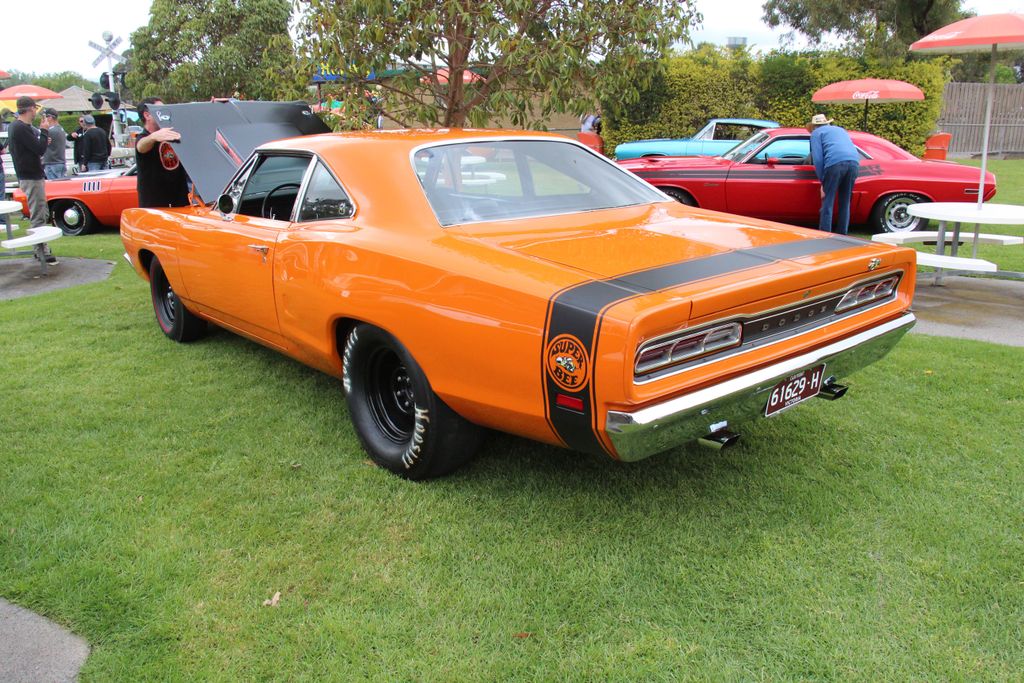
6. **1969 Dodge Coronet Super Bee A12**The 1969 Dodge Coronet Super Bee A12, often affectionately referred to as the “Six Pack” Super Bee, stands as one of the most unapologetically excessive muscle cars ever unleashed upon public roads. This was a vehicle so singularly focused on straight-line performance that its sale as a street-legal automobile bordered on the irresponsible. The A12 package transformed the already potent Super Bee into what was essentially a drag strip special, albeit one equipped with license plates.
At the very core of this beast was the formidable 440 cubic-inch V8, distinguished by its “Six Pack” induction system: three Holley two-barrel carburetors mounted on a lightweight Edelbrock aluminum intake manifold. This aggressive setup was officially rated at 390 horsepower and 490 lb-ft of torque. However, consistent with most muscle cars of that period, these figures were deliberately underreported, with actual output estimated closer to 450 horsepower. The truly massive torque was available almost immediately within the rev range, creating a car that could effortlessly break traction at virtually any speed.
What made the A12 Super Bee particularly dangerous was Dodge’s uncompromising focus on straight-line acceleration, often at the expense of nearly everything else. The package included a distinctive fiberglass lift-off hood, secured with metal pins to save weight, a robust 4.10:1 Dana 60 rear axle with a Sure Grip limited-slip differential, and heavy-duty suspension components. Notably, and quite alarmingly given its performance potential, front disc brakes were conspicuously absent; the car came standard with drum brakes at all four corners, a safety compromise that seems unconscionable today. The A12’s performance was staggering for the era, achieving 0-60 mph in approximately 5.3 seconds and quarter-mile times in the high 12-second range straight from the factory. Contemporary road tests frequently reported that the car was virtually undrivable in wet conditions due to its potent combination of excessive power and inadequate tire technology. The heavy-duty suspension, while an improvement over standard Coronets, was still primarily tuned for straight-line acceleration rather than refined handling, creating a car that could be unpredictable in corners, especially when the throttle was applied. A magazine famously described the Six Pack Super Bee as “a very specialized piece… a machine you don’t want to drive to work every day,” underscoring its compromised street manners and inherent dangers.
Car Model Information: 2021 Dodge Challenger R/T Scat Pack
Name: Dodge Super Bee
Manufacturer: Chrysler Corporation
Production: 1968–1971 , 1970–1980 (Mexico only) , 2007–2009 , 2012–2013
Layout: FR layout
Class: Muscle car
Caption: 1969 Dodge Coronet Super Bee A12 “Six Pack”
Categories: 1960s cars, 1970s cars, All articles needing additional references, All articles with dead external links, All articles with unsourced statements
Summary: The Dodge Super Bee is a mid-sized muscle car marketed by Dodge, that was produced for the 1968 through 1971 model years.
In Mexico, the Super Bee was based on a compact-sized Chrysler platform and marketed from 1970 until 1980.
The Super Bee model name was resurrected for the 2007, 2008, 2009, 2012, and 2013 Dodge Charger Super Bee models.
Get more information about: Dodge Super Bee
Buying a high-performing used car >>>
Brand: Dodge Model: Coronet Super Bee
Price: $37,986 Mileage: 20,124 mi.
Read more about: Unearthing Hidden Horsepower: 10 Rare Muscle Cars Collectors Are Finally Noticing
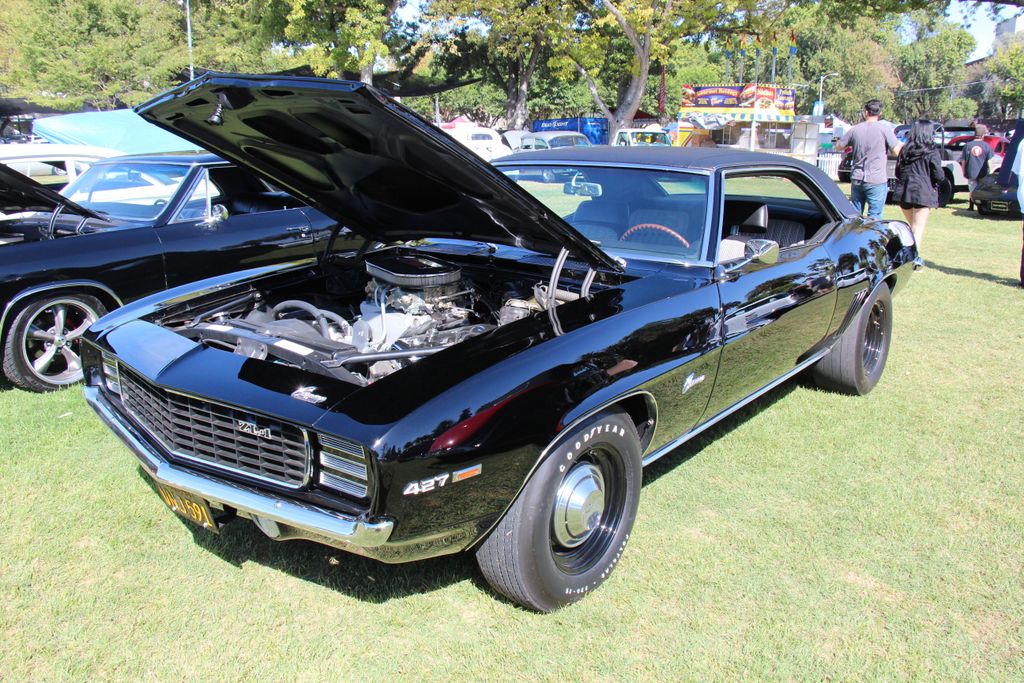
7. **1969 Chevrolet Camaro ZL1**The 1969 Chevrolet Camaro ZL1 arguably represents the most excessive factory hot rod ever disguised as a production vehicle—a car so specialized and overwhelmingly powerful that it barely qualified as street-legal. Primarily conceived for drag racing through Chevrolet’s secretive Central Office Production Order (COPO) system, the ZL1 bypassed normal production constraints to deliver what was essentially a track weapon with a license plate.
At the heart of this beast was the legendary all-aluminum 427 cubic-inch ZL1 engine, which was essentially a detuned version of the L88 racing engine famously used in Corvettes at Le Mans. This engineering marvel featured aluminum cylinder heads and blocks—an unheard-of feature in production cars of that era—alongside a heavy-duty forged rotating assembly, a solid-lifter camshaft, and a formidable 12.5:1 compression ratio. Officially rated at a laughably conservative 430 horsepower, its actual output consistently exceeded 500 horsepower and 500 lb-ft of torque, making it a true powerhouse.
What made the ZL1 Camaro particularly ill-suited for regular street use wasn’t just its raw power but its uncompromising nature. The high-compression engine necessitated premium fuel, ran excessively hot in traffic, delivered abysmal fuel economy, and featured a lumpy, unstable idle that transformed routine driving into a continuous exercise in concentration. The powerband was notoriously peaky and explosive, offering relatively little power down low but unleashing a violent rush of acceleration once the engine reached higher RPMs. Despite its racing pedigree, the ZL1 received minimal chassis upgrades over standard Camaros. While it was equipped with Chevrolet’s best available suspension (F41 heavy-duty springs and shocks), it was still woefully inadequate for controlling the car’s monumental power, especially given the primitive tire technology of the era. The standard 14-inch wheels with relatively narrow bias-ply tires were hopelessly overmatched, leading to constant traction issues even in ideal conditions. Contemporary road tests recorded quarter-mile times in the low 13-second range at speeds approaching 110 mph—figures that often undersold the car’s true potential, as most testers openly struggled with managing traction. More telling were the frequent comments about the car’s street manners: “virtually undrivable in wet conditions” and “requires constant attention” were common observations, highlighting just how ill-suited this thinly disguised race car was for public roads. Its astronomical price, with the engine option alone adding $4,160 to the base Camaro’s $2,700 tag, nearly tripled the cost, leading to only 69 examples being built, solidifying its place as one of the rarest and most valuable, yet dangerously extreme, muscle cars ever produced.
The initial wave of muscle car madness set a daunting precedent, but the hunger for power didn’t wane. Indeed, subsequent years and even entirely new eras brought forth additional machines that continued to challenge the very definition of road-legal performance. These vehicles, whether late-era classics or modern monsters, each introduced their own unique blend of audacity and peril, solidifying the muscle car’s legacy as a dangerous, yet undeniably compelling, automotive force.
Car Model Information: 2017 GMC Sierra 1500 SLT
Name: Chevrolet Camaro
Manufacturer: Chevrolet
Production: 1966–2002,2009–2023
ModelYears: 1967–2002,2010–2024
Class: Pony car
BodyStyle: coupe,convertible
Platform: GM F platform,GM Zeta platform,GM Alpha platform
Layout: Front-engine, rear-wheel-drive layout
Categories: 1970s cars, 1980s cars, 1990s cars, 2+2 coupés, 2000s cars
Summary: The Chevrolet Camaro is a mid-size American automobile manufactured by Chevrolet, classified as a pony car. It first went on sale on September 29, 1966, for the 1967 model year and was designed to compete with the Ford Mustang. The Camaro shared its platform and major components with the Firebird, produced by General Motors’ Pontiac division that was also introduced for the 1967 model year.
Four distinct generations of the Camaro were developed before production ended in 2002. The nameplate was revived on a concept car that evolved into the fifth-generation Camaro; production started on March 16, 2009.
Production of the sixth generation of the Camaro ended in December 2023, for the 2024 model year.
Get more information about: Chevrolet Camaro
Buying a high-performing used car >>>
Brand: Chevrolet Model: Camaro ZL1
Price: $31,250 Mileage: 89,435 mi.
Read more about: The Elite Six: Modern Muscle Cars That Deliver Unapologetically Low Fuel Economy
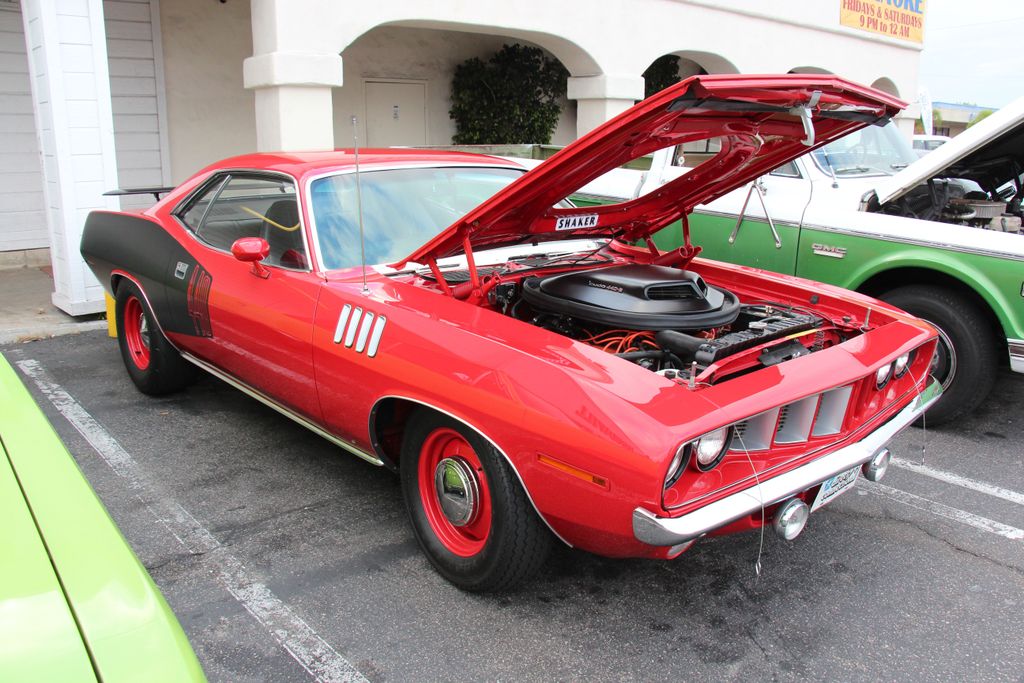
8. **1971 Plymouth Hemi ‘Cuda**As the original muscle car era began its inevitable decline, the 1971 Plymouth Hemi ‘Cuda emerged as one of its most flamboyant and excessive swansongs. Representing one of the final vehicles to house Chrysler’s legendary 426 Hemi engine before emissions regulations and the burgeoning oil crisis dictated its discontinuation, this ‘Cuda was, in essence, a street-legal drag racer with a thinly veiled disregard for everyday practicality or safety. Its core was the fearsome 426 Hemi V8, characterized by its iconic hemispherical combustion chambers, dual four-barrel carburetors, and a robust forged crankshaft. Officially rated at 425 horsepower and 490 lb-ft of torque, the engine’s actual output was consistently acknowledged to exceed 500 horsepower in its stock configuration. This monumental power, when channeled through the ‘Cuda’s relatively lightweight E-body platform, created a dangerously imbalanced power-to-weight ratio that proved challenging, if not impossible, for most drivers to manage safely on public roads.
The ’71 Hemi ‘Cuda’s inherent unsuitability for street use stemmed directly from its uncompromising focus on straight-line performance. The Hemi engine itself was a temperamental beast, demanding meticulous tuning and constant maintenance for its intricate dual carburetor setup. Its fuel economy was notoriously abysmal, often plunging into single-digit miles per gallon, and it ran excessively hot in traffic, making stop-and-go driving a grueling exercise. Critically, the engine produced such an overwhelming surge of torque that even minimal throttle inputs could effortlessly break the rear wheels loose, transforming smooth, controlled driving into a continuous battle against traction loss.
Beyond its engine, the ‘Cuda’s handling characteristics were equally problematic. Despite its aggressive styling cues, including the prominent “Shaker” hood, the chassis was woefully ill-equipped to harness the Hemi’s immense power. The torsion bar front suspension and leaf spring rear setup, while designed for robust straight-line acceleration, delivered notoriously unpredictable handling during cornering, particularly when the throttle was applied mid-turn. Contemporary road tests frequently highlighted significant body roll, a persistent tendency towards understeer, and the alarming habit of the rear end breaking loose without warning. The sheer danger of these vehicles was further underscored by insurance companies, who began specifically targeting Hemi-powered cars with exorbitant premiums, implicitly acknowledging the extreme risk they posed. These premiums often surpassed the car’s monthly payment, contributing to its extreme rarity, with only 108 hardtops and 11 convertibles built with the Hemi engine in 1971. A notable period review candidly stated that the Hemi ‘Cuda demanded “the skills of a test pilot” to operate safely at its limits, a testament to its raw, untamed nature.
Car Model Information: 2017 GMC Sierra 1500 SLT
Caption: 1970 Hardtop Coupe
Name: Plymouth Barracuda
Manufacturer: Plymouth (automobile)
Production: 1964–1974
Assembly: Fenton, Missouri,Hamtramck, Michigan,Maywood, California,Windsor, Ontario
Layout: Front-engine, rear-wheel drive layout
Class: Pony car
Categories: 1970s cars, All articles with dead external links, All articles with unsourced statements, Articles with dead external links from February 2018, Articles with dead external links from January 2022
Summary: The Plymouth Barracuda is a two-door pony car that was manufactured by Chrysler Corporation from 1964 through 1974 model years.
The first-generation Barracuda was based on the Chrysler A-body and was offered from 1964 until 1966. A two-door hardtop (no B-pillar) fastback design, it shared a great majority of parts and bodywork with the Plymouth Valiant, except for the distinctive wraparound rear glass.
The second-generation Barracuda, though still Valiant-based, was heavily redesigned. Built from 1967 through 1969, it was available as a two-door in fastback, notchback, and convertible versions.
The third generation, offered from 1970 until 1974, was based on the Chrysler E-body, exclusive to it, and the slightly larger Dodge Challenger. A completely new design, the two-door Barracuda was available in hardtop and convertible body styles.
Get more information about: Plymouth Barracuda
Buying a high-performing used car >>>
Brand: Plymouth Model: Hemi ‘Cuda
Price: $31,250 Mileage: 89,435 mi.
Read more about: The Unforgettable Roar: Unpacking Why ’60s & ’70s Engines Define an Era, Despite Their Flaws, and What Modern Tech Can’t Replicate
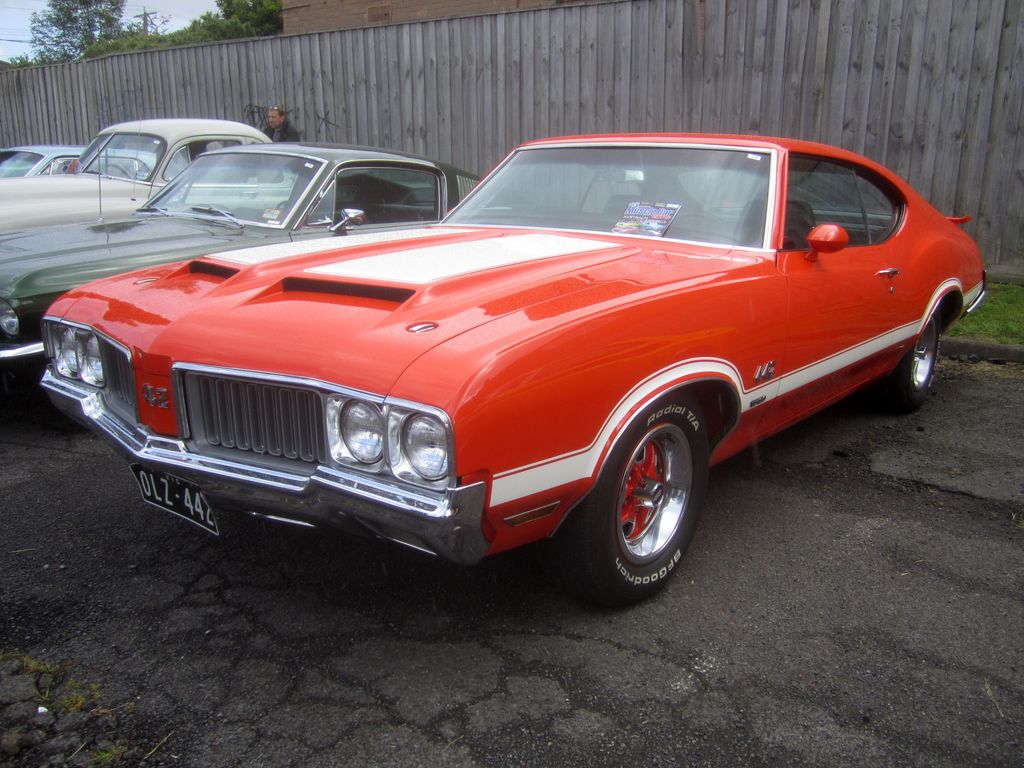
9. **1970 Oldsmobile 442 W-30**The 1970 Oldsmobile 442 W-30 was a powerful statement that definitively shattered the brand’s historically conservative image. While Oldsmobile traditionally catered to a more refined clientele compared to its Pontiac or Chevrolet counterparts, the W-30 package transformed the 442 into a deceptively mature-looking street predator, dangerously overpowered for the public roadways it inhabited. At the heart of this formidable sleeper lay Oldsmobile’s massive 455 cubic-inch V8, fortified with the W-30 performance package. This upgrade included a hotter camshaft, specialized carburetor calibration, an aluminum intake manifold, and a distinctive fiberglass hood equipped with functional air scoops, creating a sealed, ram-air induction system. Officially rated at 370 horsepower and a staggering 500 lb-ft of torque, the engine’s actual output was widely believed to exceed 400 horsepower, with torque figures that positioned it among the most brutally accelerating cars of its day.
What made the W-30 particularly excessive and perilous was its extraordinary torque delivery characteristics. While the engine’s peak horsepower arrived at a relatively high 5,200 RPM, its monumental torque was available almost immediately off idle, with over 440 lb-ft churning out at a mere 1,200 RPM. This created a vehicle capable of effortlessly breaking its rear wheels loose with just a moderate throttle application, a characteristic that rendered it exceptionally dangerous in wet conditions or in the hands of inexperienced drivers who might not anticipate such a sudden, violent surge of power.
Despite Oldsmobile’s efforts to equip the W-30 with a heavy-duty suspension system—featuring stiffer springs, recalibrated shock absorbers, and larger sway bars—these improvements proved ultimately inadequate for effectively managing the engine’s tremendous torque. Contemporary road tests frequently reported alarming levels of body roll during cornering and a persistent, unsettling tendency for the rear end to step out unpredictably when power was applied mid-corner. Car Craft magazine famously noted that the W-30 required “a delicate right foot and considerable skill” to drive quickly on anything but perfectly straight roads. The car’s luxurious appointments also meant it weighed nearly 4,000 pounds, and this substantial mass, combined with the period-correct F70-14 Goodyear bias-ply tires, created a dangerous disparity between the car’s acceleration capabilities and its ability to handle or brake effectively. Even with standard front disc brakes, the stopping power was often marginal for the car’s performance potential, leading to brake fade after repeated hard stops. The W-30’s relative rarity, with only 1,688 produced in 1970, and its subtle exterior meant that its true capabilities were often underestimated, sometimes with catastrophic consequences.
Car Model Information: 1969 Oldsmobile 442
Name: Oldsmobile 442
Manufacturer: Oldsmobile
ModelYears: 1964–1980,1985–1987,1990–1991
Class: Muscle car
Layout: FR layout
Caption: 1971 Oldsmobile 442
Categories: 1960s cars, 1970s cars, 1980s cars, All articles with unsourced statements, Articles with short description
Summary: The Oldsmobile 4-4-2 is a muscle car produced by Oldsmobile between the 1964 and 1987 model years. Introduced as an option package for US-sold F-85 and Cutlass models, it became a model in its own right from 1968 to 1971, spawned the Hurst/Olds in 1968, then reverted to an option through the mid-1970s. The name was revived in the 1980s on the rear-wheel drive Cutlass Supreme and early 1990s as an option package for the new front-wheel drive Cutlass Calais.
The “4-4-2” name (pronounced “Four-four-two”) derives from the original car’s four-barrel carburetor, four-speed manual transmission, and dual exhausts. It was originally written “4-4-2” (with badging showing hyphens between the numerals), and remained hyphenated throughout Oldsmobile’s use of the designation. Beginning in 1965, the 4-4-2s standard transmission was a three-speed manual along with an optional two-speed automatic and four-speed manual, but were still badged as “4-4-2″s.
Because of this change, from 1965 on, according to Oldsmobile brochures and advertisements, the 4-4-2 designation referred to the 400 cubic inch engine, four-barrel carburetor, and dual exhausts. By 1968, badging was shortened to simply “442”, but Oldsmobile brochures and internal documents continued to use the “4-4-2” model designation.
Get more information about: Oldsmobile 442
Buying a high-performing used car >>>
Brand: Oldsmobile Model: 442
Price: $43,990 Mileage: 24,000 mi.
Read more about: Unleashing the Beasts: The 10 Most Powerful Classic Muscle Cars We Absolutely Crave for Our Garages
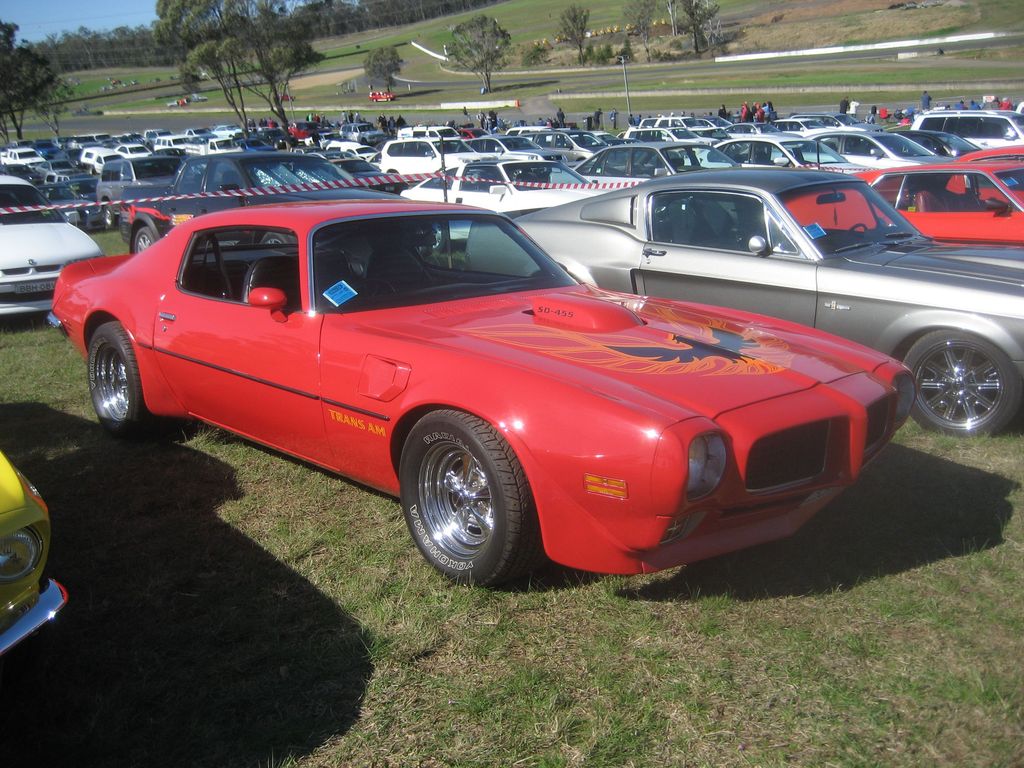
10. **1973 Pontiac Firebird Trans Am SD-455**The 1973 Pontiac Firebird Trans Am SD-455 represents arguably the last truly excessive muscle car of the original era—a final, defiant howl against the inexorable march of emissions regulations and fuel economy concerns that were rapidly neutering American performance cars. What made the Super Duty Trans Am particularly remarkable was its miraculous escape from the corporate constraints that had already begun strangling horsepower figures across the automotive industry. At the heart of this final muscle car hurrah was the legendary Super Duty 455 engine, a powerplant so overbuilt it seemed more appropriate for a NASCAR oval than public roads. Unlike the regular 455, the SD featured a unique four-bolt main reinforced block, special forged pistons, a forged steel crankshaft, an aluminum intake manifold, and oversized valves. While officially rated at a modest 310 horsepower—a figure deliberately underreported due to escalating insurance premiums—its actual output consistently exceeded 370 horsepower and 390 lb-ft of torque, firmly establishing it as one of the most powerful engines available as the muscle car era drew to a close.
However, what made the SD-455 Trans Am particularly ill-suited for daily street use wasn’t just its raw power, but the compromised chassis in which it was mounted. While the second-generation F-body platform offered superior handling characteristics compared to its predecessor, it still featured a front-heavy weight distribution. This inherent imbalance created a persistent tendency toward understeer during initial cornering, which could then abruptly transition to unpredictable and dangerous oversteer when power was aggressively applied. Even the standard Radial Tuned Suspension, considered advanced for its time, proved ultimately inadequate for effectively managing the SD-455’s formidable power, especially given its propensity for sudden, explosive torque delivery.
Contemporary road tests of the era vividly highlighted the car’s dual nature. Car and Driver recorded an astonishing 0-60 mph time of 5.4 seconds—a truly remarkable figure for 1973, a period when most performance cars had been severely detuned—yet also noted that the car required “considerable skill to drive quickly through corners.” High-speed stability was further compromised by the car’s aerodynamic limitations, with significant front-end lift commonly reported at speeds exceeding 100 mph, unsettling the vehicle. The very existence of the SD-455 was something of an engineering miracle, requiring special exemptions from Pontiac’s engineering staff to bypass General Motors’ newly imposed corporate limits on compression ratios and emissions equipment. This rebellious spirit was undeniably reflected in the car’s nature: raw, uncompromising, and exceptionally demanding of its driver. The fact that it emerged in 1973, when most American performance cars had already been severely neutered, makes it all the more remarkable. With only 252 Trans Ams equipped with the SD-455 engine in 1973, this rare bird represents the last gasp of the original muscle car era, a final, excessive statement from Detroit before fuel economy concerns and emissions regulations permanently reshaped the world of automotive performance.
Car Model Information: 2022 Hyundai SANTA FE Limited
Name: Pontiac Firebird
Caption: The second, third, and fourth generations of,the Pontiac Firebird Trans Am
Manufacturer: Pontiac (automobile)
Production: February 23, 1967 – August 30, 2002
ModelYears: 1967 – 2002
Class: Pony car,Muscle car
Platform: GM F platform
Related: Chevrolet Camaro
Layout: Front engine, rear-wheel-drive layout
Categories: 1970s cars, 1980s cars, 1990s cars, 2000s cars, All articles with dead external links
Summary: The Pontiac Firebird is an American automobile built and produced by Pontiac from the 1967 to 2002 model years. Designed as a pony car to compete with the Ford Mustang, it was introduced on February 23, 1967, five months after GM’s Chevrolet division’s platform-sharing Camaro. This also coincided with the release of the 1967 Mercury Cougar, Ford’s upscale, platform-sharing version of the Mustang.
The name “Firebird” was also previously used by GM for the General Motors Firebird series of concept cars in the 1950s.
Get more information about: Pontiac Firebird
Buying a high-performing used car >>>
Brand: Pontiac Model: Firebird Trans Am SD-455
Price: $28,719 Mileage: 32,552 mi.
Read more about: 15 Untamed 1970s Muscle Cars That Would Leave Today’s Drivers Absolutely Speechless
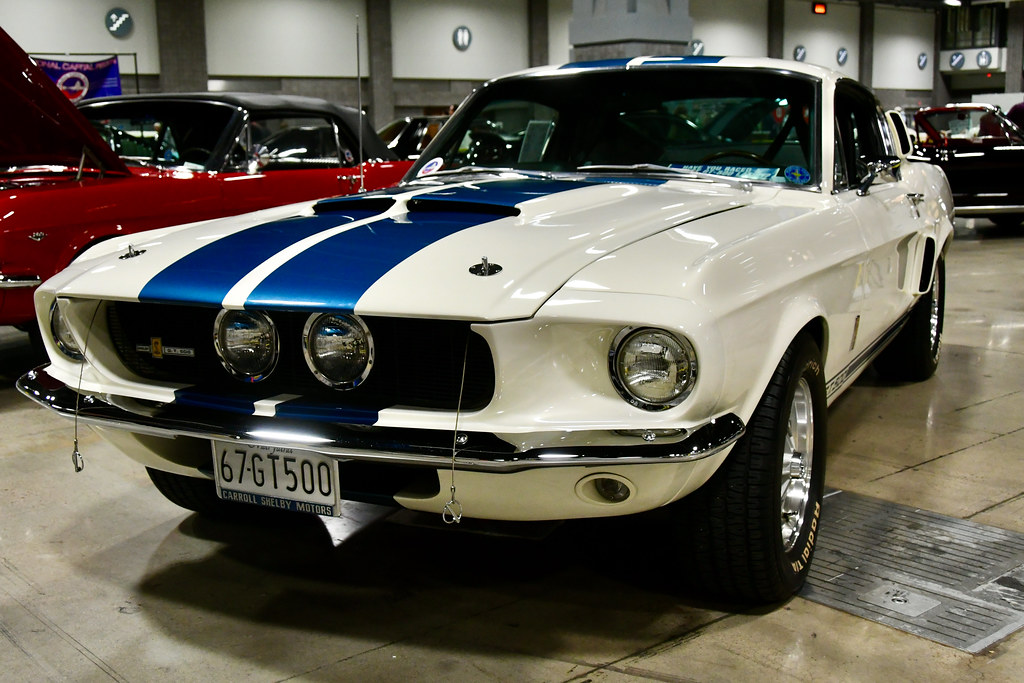
11. **1967 Shelby GT500**The 1967 Shelby GT500 holds a legendary status in the muscle car pantheon, yet it was also a machine that could be genuinely terrifying in the wrong hands. Powered by a potent 428 cubic-inch V8, the GT500 delivered an earth-shaking 355 horsepower. Its distinctive, aggressive front grille and piercing headlights gave it an undeniably imposing presence, a visual warning of the raw power lurking beneath its sleek lines. Drivers often recounted that piloting a GT500 felt akin to attempting to tame a wild stallion on wheels, a testament to its untamed nature.
Performance figures for the era were staggering, with the GT500 capable of clocking 0-60 mph in under six seconds. However, this blistering acceleration came with significant caveats. With its rear-wheel-drive configuration and an absolute absence of modern electronic assists like traction control or stability control, the GT500 was an undeniable handful, particularly when navigating tight corners or uneven surfaces. The visceral growl of its dual exhaust system was known to leave bystanders frozen in awe—or perhaps, more accurately, in fear—as the car roared past.
The inherent danger of the GT500 stemmed precisely from this blend of immense power and rudimentary handling technology. Its heavy-duty suspension, while an improvement over standard Mustangs, was still a far cry from what was truly needed to safely manage such prodigious torque and horsepower. Pushing the GT500 to its limits on public roads was a high-stakes gamble, requiring a rare combination of courage, skill, and respect for its capabilities. The legacy of the 1967 Shelby GT500 is not just one of iconic design and thrilling speed, but also of a raw, untamed performance machine that demanded complete mastery from its driver, embodying the pure, unadulterated essence of muscle car danger.
Read more about: Lost in Time: Uncovering the Eerie, Dust-Laden Legacy of an Abandoned Classic Car Museum
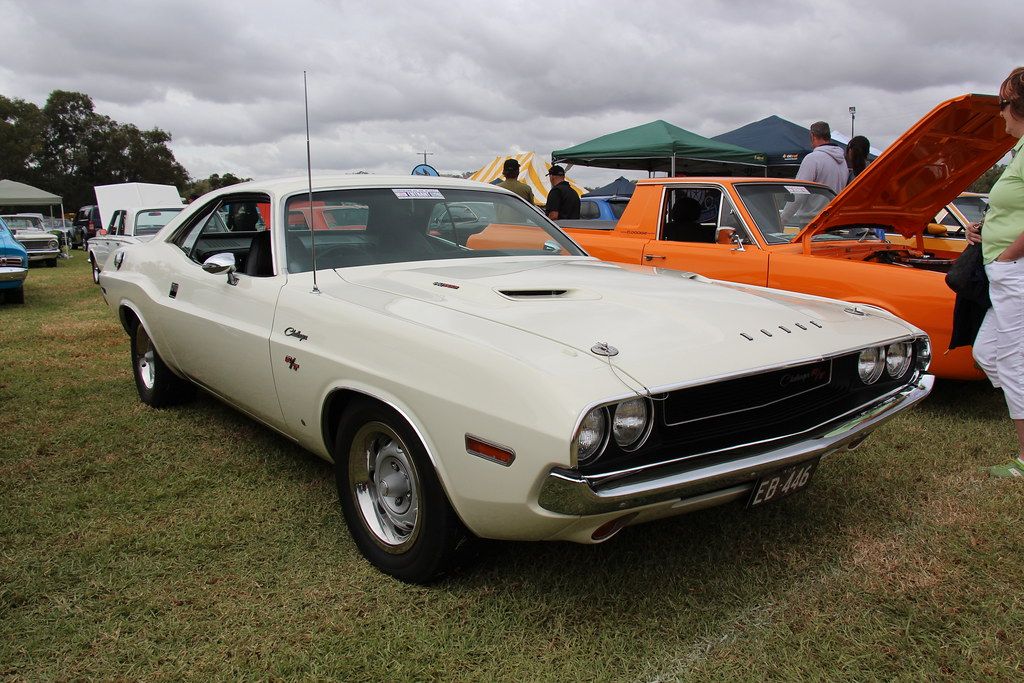
12. **1970 Dodge Challenger R/T**The 1970 Dodge Challenger R/T was an audacious declaration of raw power, its bold colors mirroring the uncompromising statement it made on the street. Under its expansive hood, the legendary 426 HEMI engine pumped out an official 425 horsepower, a figure that continues to command respect and raise eyebrows even today. The Challenger’s massive hood scoop and low, aggressive stance screamed intimidation, leaving no doubt as to its performance intentions. It was a vehicle that unequivocally answered the question, “Who needs subtlety when you can terrify at first glance?”
Drivers of the Challenger R/T often described the experience as being as unpredictable as a ticking time bomb on the road. At high speeds, the car’s rear end developed a disconcerting tendency to act with a mind of its own, demanding exceptional driving skill and constant vigilance to keep it pointed straight. Even when idling, the Challenger’s thundering growl felt less like a passive rumble and more like an active warning: “Handle it with care, or else.” This visceral communication with the driver underscored its demanding nature.
Elaborating on its inherent danger, the Challenger R/T, especially when equipped with the Hemi engine, was a heavy car with a relatively short wheelbase for its immense power, making it prone to sudden and often catastrophic snap oversteer. Its braking capabilities, which frequently consisted of drum brakes at all four corners or early, less effective front disc setups, were barely adequate for its monumental acceleration. This critical imbalance between going fast and stopping quickly compounded the risk significantly in emergency situations. The 1970 Dodge Challenger R/T encapsulated the purest muscle car ethos of brute force and audacious speed over refined handling or advanced safety, making it a truly formidable and often perilous machine to master.
Car Model Information: 2017 GMC Sierra 1500 SLT
Name: Dodge Challenger (1970)
Production: 1969–1974
ModelYears: 1970–1974
Successor: ubl
Caption: 1970 Challenger R/T
Manufacturer: Dodge
Wheelbase: cvt
Length: cvt
Width: cvt
Height: cvt
Categories: 1970s cars, All articles lacking reliable references, All articles needing additional references, Articles lacking reliable references from November 2014, Articles needing additional references from April 2024
Summary: The Dodge Challenger is an automobile produced by American automobile manufacturer Dodge. The first use of the Challenger name by Dodge was in 1959 for marketing a “value version” of the full-sized Coronet Silver Challenger.
From model years 1970 to 1974, the first generation Dodge Challenger pony car was built using the Chrysler E platform in hardtop and convertible body styles sharing major components with the Plymouth Barracuda.
Get more information about: Dodge Challenger (1970)
Buying a high-performing used car >>>
Brand: Dodge Model: Challenger R/T
Price: $31,250 Mileage: 89,435 mi.
Read more about: Sacramento Manhunt Concludes: Three Suspects in Custody After High-Speed Chase and Shooting
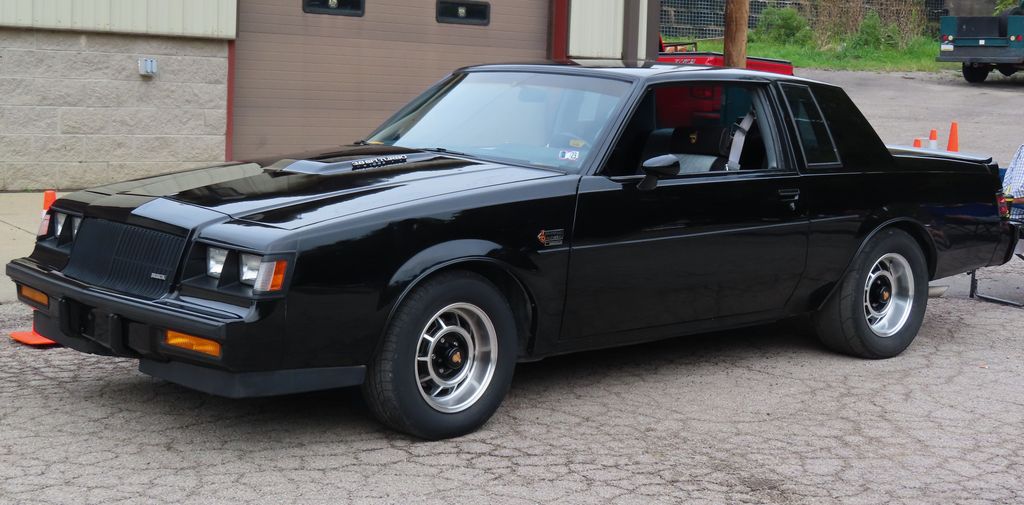
13. **1987 Buick GNX**Fast-forwarding beyond the original muscle car era, the 1987 Buick GNX, affectionately nicknamed “Darth Vader’s Car,” brought a new, stealthier form of danger to the streets. Unlike the thunderous, naturally aspirated V8s of its predecessors, the GNX harnessed a turbocharged 3.8L V6 engine. Officially, it produced 276 horsepower, though independent tests consistently revealed its actual output to be closer to 300 horsepower at 4,400 RPM, with torque rated at a formidable 360 lb-ft at 3,000 RPM. This deliberate underrating of performance was a calculated move by Buick, primarily for marketing purposes and to mitigate potentially crippling insurance premiums, echoing a tactic often employed in the 1960s.
Yet, unlike traditional muscle cars that announced their presence with a roaring exhaust, the GNX possessed a more insidious quality; it crept up silently, then unleashed its turbocharged fury with an unexpected, violent surge. Its most distinctive and dangerous characteristic was its unpredictable turbo lag, a phenomenon that caught many an unsuspecting driver off guard. This delay in power delivery, followed by an explosive boost, left a trail of stunned opponents and white-knuckled drivers struggling to maintain control. The car’s unique character marked a significant shift in muscle car philosophy.
The unique perils of the GNX stemmed directly from this turbo lag in combination with its high-performance, rear-wheel-drive platform. Unlike naturally aspirated engines that offer a linear and predictable power delivery, the GNX’s sudden rush of turbocharged power could easily overpower its relatively unsophisticated chassis and tire technology, especially when exiting corners aggressively or driving in adverse weather conditions. This made it a particularly demanding and potentially dangerous machine for drivers unfamiliar with the specific characteristics of forced induction. The 1987 Buick GNX thus represented a new breed of muscle car menace, proving that the pursuit of extreme power and its inherent dangers were far from confined to the golden era, bringing a fresh challenge to automotive enthusiasts.
Read more about: The New American Dream: Why Ford Broncos and Classic Chevys Are Reaching Astounding Values Among the Ultra-Rich
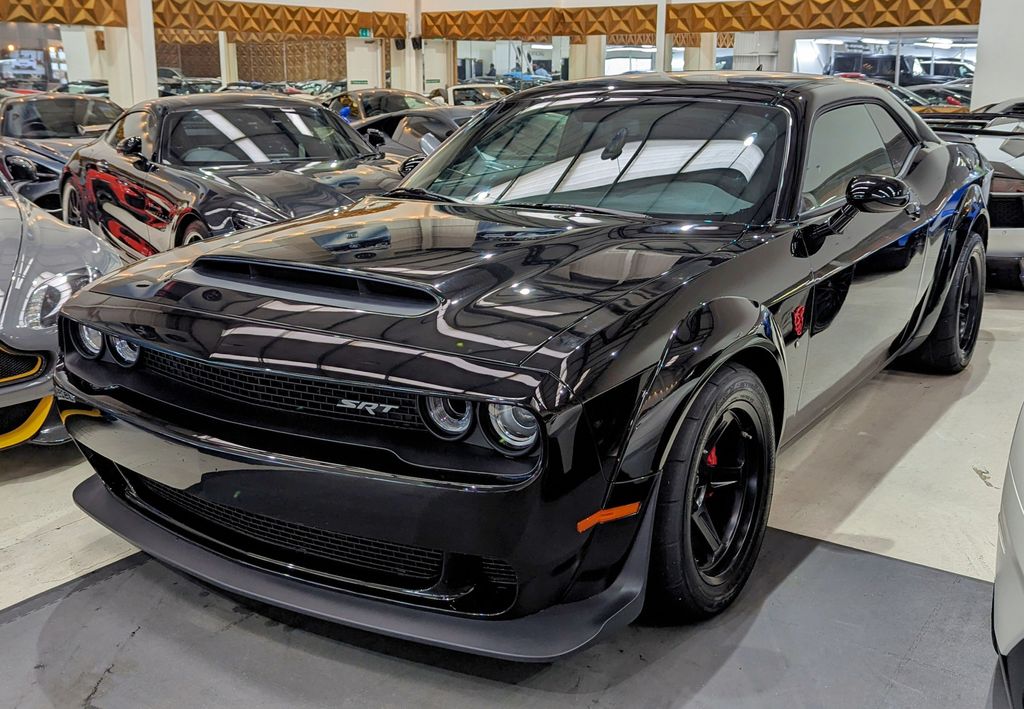
14. **2018 Dodge Challenger SRT Demon**In a powerful testament to the enduring, and indeed escalating, pursuit of extreme power, the 2018 Dodge Challenger SRT Demon emerged as a modern-day dragstrip assassin, redefining what a production car could achieve. With an astonishing 840 horsepower when fueled with race gas, it emphatically claimed the title of the fastest production car in the quarter-mile. Dodge underscored the Demon’s extreme nature by shipping it with a dedicated crate of performance parts, almost as if issuing a direct warning to owners to approach its capabilities with the utmost caution and respect.
This incredible machine was capable of physics-defying feats, famously lifting its front wheels off the ground under full acceleration—a spectacle both thrilling and profoundly terrifying. Its specialized drag radial tires were designed to provide unparalleled grip on dry, prepared surfaces, but this singular focus meant they made wet roads exceptionally hazardous, creating a specific modern form of peril. For the Demon, the line between exhilarating, record-breaking performance and outright fear was razor-thin, a constant reminder of the immense forces at play.
While equipped with an array of advanced electronic aids and braking systems far superior to anything available in its vintage predecessors, the Demon’s sheer, unprecedented power still pushes the very boundaries of control. Its specialized drag-focused tires, while essential for its quarter-mile prowess, are not suitable for all-weather conditions or aggressive road course driving, presenting a distinct, modern form of danger for an uninitiated or careless driver in varied environments. The 2018 Dodge Challenger SRT Demon stands as a monumental testament to the relentless, and indeed escalating, quest for extreme power, demonstrably bringing the visceral danger inherent in muscle cars into the twenty-first century with unparalleled ferocity.
Car Model Information: 2017 GMC Sierra 1500 SLT
Name: Dodge Challenger (2008)
Production: 2008–2023
ModelYears: 2008–2023
Assembly: Brampton, Ontario
Designer: Brian Nielander,
Predecessor: ubl
Successor: Dodge Charger (2024)
Caption: 2017 Dodge Challenger R/T Scat Pack
Manufacturer: Dodge
Class: Muscle car
BodyStyle: notchback,coupe
Engine: unbulleted list
Abbr: on
Order: Chrysler Hemi engine#6.4 Apache / 392 Apache,V8 engine
Layout: Front-engine, rear-wheel-drive layout,Front-engine, all-wheel-drive layout
Transmission: Ultradrive#42RLE,5G-Tronic,Tremec TR-6060 transmission,ZF 8HP transmission
Wheelbase: cvt
Length: cvt
Width: cvt
Height: cvt
Categories: 2000s cars, 2010s cars, 2020s cars, All articles that are excessively detailed, All articles with style issues
Summary: The Dodge Challenger is a full-size muscle car that was introduced in early 2008 originally as a rival to the evolved fifth-generation Ford Mustang and the fifth-generation Chevrolet Camaro.
In November 2021, Stellantis announced that 2023 model year would be the final model year for both the LD Dodge Charger and LA Dodge Challenger, as the company will focus its future plans on electric vehicles rather than fossil fuel powered vehicles, due to tougher emissions standards required by the Environmental Protection Agency for the 2023 model year. Challenger production ended on December 22, 2023, and the Brampton, Ontario assembly plant will be re-tooled to assemble an electrified successor.
Get more information about: Dodge Challenger (2008)
Buying a high-performing used car >>>
Brand: Dodge Model: Challenger SRT Demon
Price: $31,250 Mileage: 89,435 mi.
Read more about: Beyond the V8: Unpacking the Electrifying Evolution of the Modern Muscle Car
From the raw, untamed beasts of the horsepower wars to the modern, technologically advanced titans of today, the saga of the dangerous muscle car is a relentless narrative of audacity, engineering prowess, and the intoxicating allure of speed. Each machine, in its own unique way, pushed the boundaries of what was deemed acceptable or safe for public roads, etching its name into automotive history not just for its performance, but for the thrilling, often perilous, experience it offered. These cars stand as enduring legends, reminding us that sometimes, the most exhilarating rides are also the most demanding, forever challenging the driver to master their immense power. They are more than just vehicles; they are monuments to an uncompromising American spirit that, even today, continues to chase the horizon with a roar and a tire-smoking fury.

